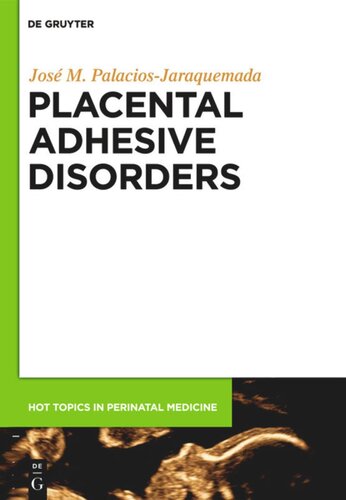

Most ebook files are in PDF format, so you can easily read them using various software such as Foxit Reader or directly on the Google Chrome browser.
Some ebook files are released by publishers in other formats such as .awz, .mobi, .epub, .fb2, etc. You may need to install specific software to read these formats on mobile/PC, such as Calibre.
Please read the tutorial at this link: https://ebookbell.com/faq
We offer FREE conversion to the popular formats you request; however, this may take some time. Therefore, right after payment, please email us, and we will try to provide the service as quickly as possible.
For some exceptional file formats or broken links (if any), please refrain from opening any disputes. Instead, email us first, and we will try to assist within a maximum of 6 hours.
EbookBell Team

0.0
0 reviewsNew series
Abnormal placental adhesive disorders are associated to massive hemorrhage and high maternal morbidity and mortality. The main risk factor for abnormal invasive placentation is the repeated cesarean, although other factors were identified. There are specific techniques to provide a high confidence diagnosis. However, precise skills must be acquired to recognize detailed diagnostic signs, to avoid common technical mistakes, and also to know when, how and why it is necessary to use each of them. Presurgical study provides diagnosis, extension and compromise of neighboring structures such as the bladder or the parametrium. Knowledge of placental invasion extension is needed to plan any resective surgery such as hysterectomy or one-step conservative surgery. Due to the fact that topography of the invaded area has direct relation with the specific arterial pedicles, a map of the invasion is required to know which type of proximal vascular control can be more effective. Leaving the placenta in situ seems to be the best option when resources or a skilled team are not available, but it requires intensive postoperative controls to detect infection, bleeding or coagulation disorders. Hysterectomy can be an easy solution for non-experimented operators; however, it is usually a very complicated procedure with demonstrated morbidity and mortality due to hemodynamic and hemostatic problems.
This book gathers the latest knowledge in relation with the etiology, diagnosis, treatment and also the authors personal experience in more than 500 cases. All aspects of this condition have been analyzed to provide an accurate management, which includes vascular control, urology, anesthesia and hemodynamic management among others.